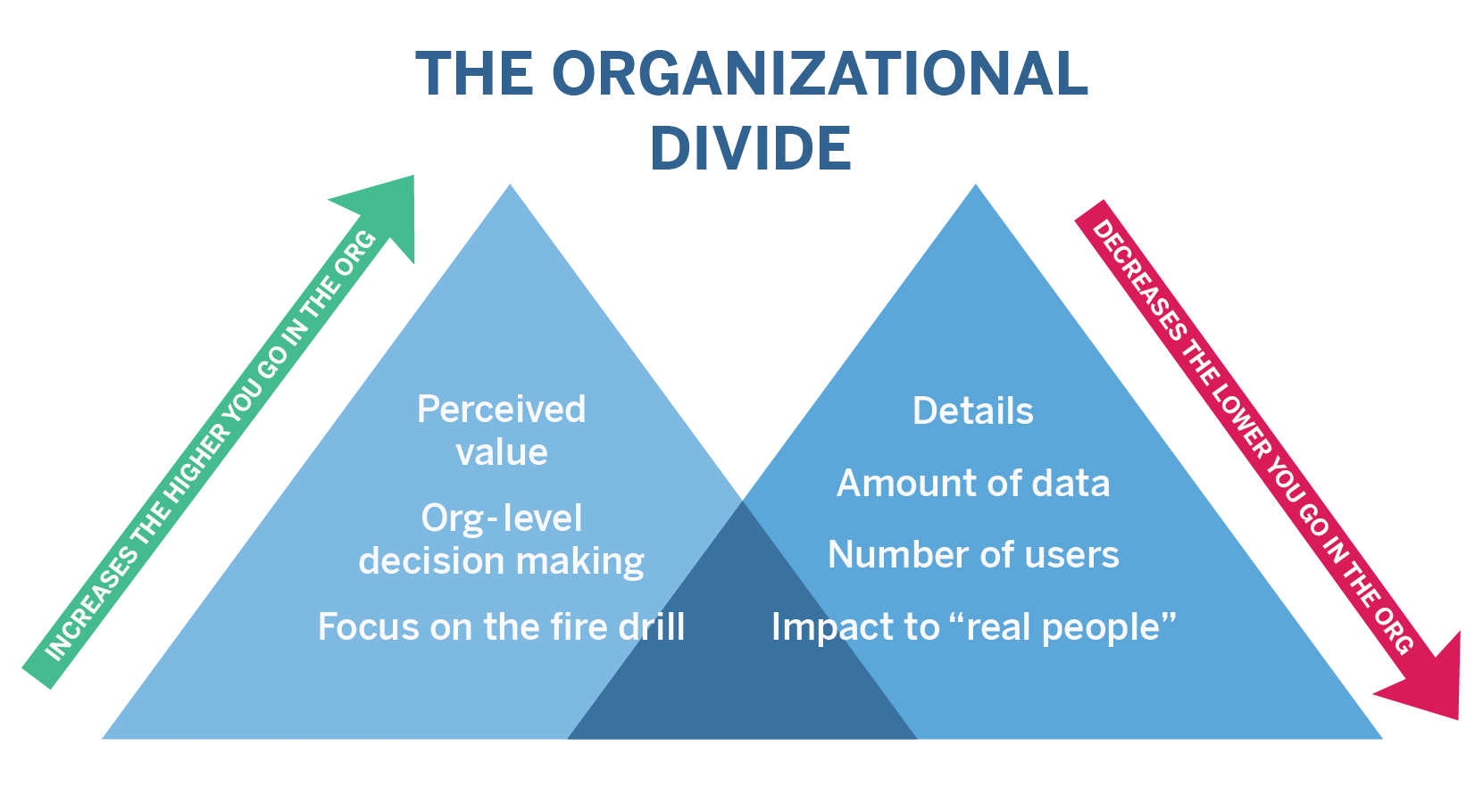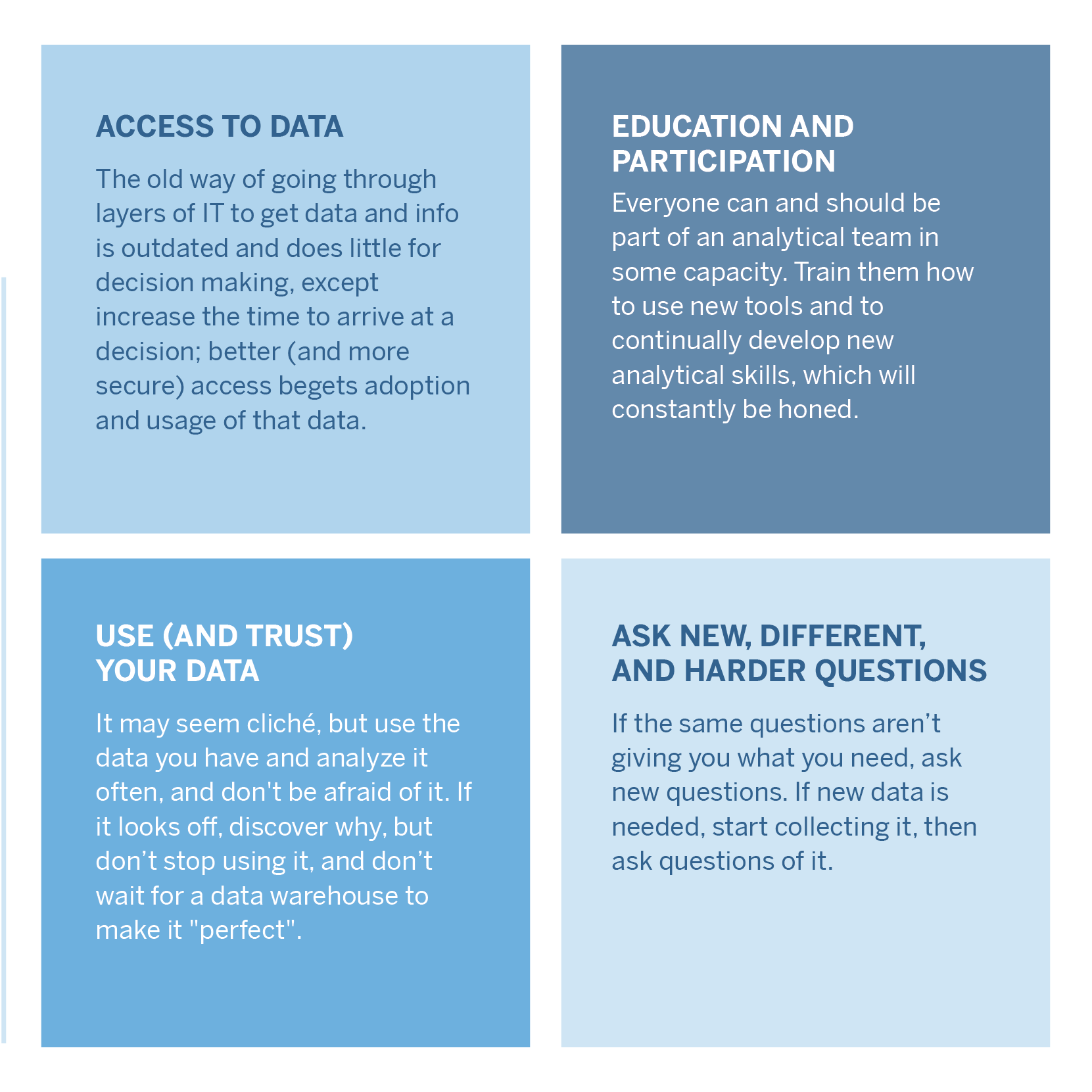Better Government with Data Analytics: Three ways to build data literacy in your organization
We're sharing part two of our four-part blog series, Better Government with Data Analytics. Dive deeper in part two as we share three focus areas to help you drive a higher level of data literacy.
Welcome to Part Two of our four-part blog series, Better Government with Data Analytics. In the first blog, we discussed the “all hat, no cattle” analogy—a humorous reference to dashboards that do not empower decision making or drive outcomes or behavioral change.
But there’s something larger going on with those insight-less analytics —something driving your organization to underachieve with data and analytics. That something is a lack of data literacy.
The definition of data literacy is rather simple. Accordingly, my goal in this blog is to share three focus areas that will help drive your organization toward attaining a higher level of data literacy, and how to reap the benefits that should follow.
1. Ask the right questions and communicate the right answers
You’ve always heard that communication is the key to success. Yet, minimum information with little insight (no hats or cattle), or the same old boring insight that you have to track down yourself, the hard way—like what’s regularly shared in canned “reports” —doesn’t deliver business value. I don’t know if this is intentional but avoiding deeper questions and poorly communicating results absolutely blocks progress toward changing behavior.
As an aside, overlooking the right questions, inadvertently or not, also encourages duplicative or unsanctioned information sources to proliferate. This devalues the organizations’ investments in data and analytics platforms. Despite the good governance availed by data analytics applications, creative employees get the data they need in the way that’s easiest for them, regardless.
2. Minimize the organizational divide
The organizations I support have diverse missions and thousands of employees, and in every hands-on event that I do, I always ask folks if they use data daily to do their job. Without fail, nearly everyone says “of course I do!”
Oddly though, when I ask leaders how many of their people need access to data analytics, there’s a marked gap between the number they give, and the actual number it should be. I don’t know if this was due to lack of understanding, or a perceived lack of budget, but I identified a good explanation for it, and it’s the organizational divide.
Leadership (especially appointees) sometimes has difficulty understanding information that career employees just know from many years of experience in the field. Likewise, career employees have a hard time understanding the challenges facing leadership, including rapid decision making and legislative fire drills they encounter daily.

A common vernacular and the realization that learning to speak ‘better data’ through analytical engagement and good governance will go far to promote increased data literacy. This requires people to be involved (and enabled/empowered) at multiple levels throughout the organization to take advantage of the knowledge of the collective teams.
3. Change the culture and change the outcome
Most government organizations are awash in data—and they’re being driven by their people and broken processes to the data in reports that “have always been done this way” or analyses constrained by time and resources (regardless of the potential gain in business value by asking harder questions, or modernizing process). Note the subtle difference of being driven to the data, instead of being driven by the data. That’s something you should think long about for your own organization.
This is absolutely not a technology problem, but more a culture problem, and culture is the hardest thing to change. However, each journey begins with a step, and the journey to being analytically forward and data literate—not simply data driven—can begin with any or all of the examples below, as championed by your organization’s leadership.

Bringing it home
There you have it: three of many focus areas that you as an executive, leader, or manager in your organization can (and should) consider as part of your road map to growing data culture and elevating leadership and decision making in your organization. Data literacy will help your team know how to ask the right questions and communicate the results farther and wider; be more aware of, in tune with, and responsive to the analytical needs up and down the org chart (rapidly, I might add); and finally, drive an analytically-forward culture in your organization, at the individual level first, but quickly proliferating upward to the top.
The three concepts outlined here are absolutely critical and foundational to the next step, which involves inspiration and thoughtful designa language that is easy to interpret, easy to speak, but sometimes difficult for someone that does not understand the basics to translate to others. Part three of this series explores how thoughtful design can help you apply data literacy principles and continue to move the needle in a positive direction for your organization.
This blog is part of a series for state, local, and education data rock stars who are interested in gaining deeper insights about how to leverage data to improve results, and build a culture of analytics within their organizations.



